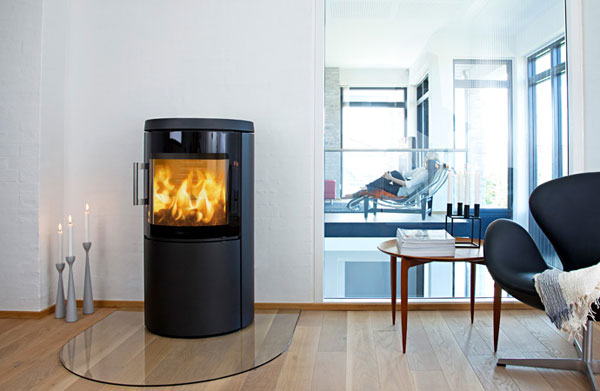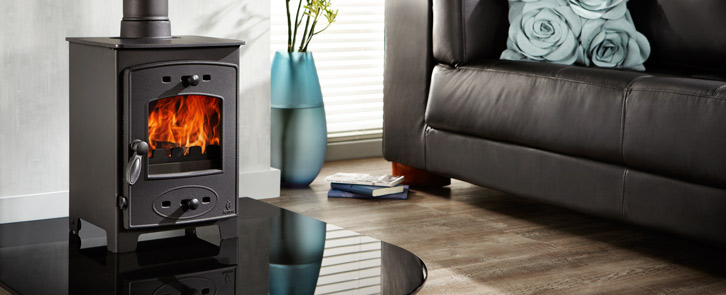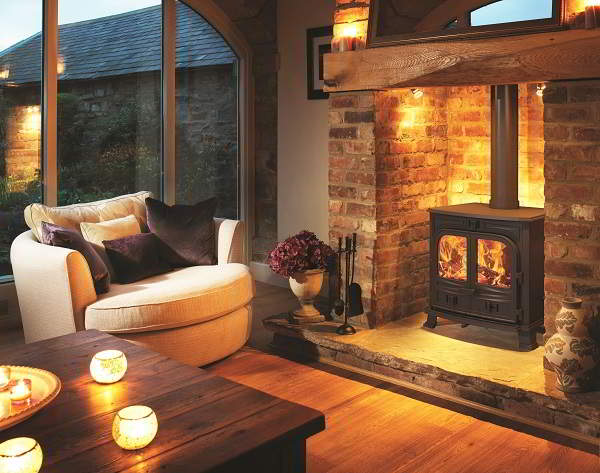As the popularity of wood-burning and multifuel stoves continues to grow, we thought this would be the perfect opportunity to clarify some of the stove glossary and terminology you will come across. Even though modern day wood-burning stoves offer an array of different add-ons, the basic glossary and terminology is the same.
Airwash
You will hear the term airwash with the vast majority of stove glossary listings today, in conjunction with maintaining clear glass across the viewing area. This is quite simply a system which allows air to flow from a vent on the top of the stove down over the glass viewing area. Thankfully this prevents the buildup of tar and soot thereby ensuring that the flickering flames and the burning embers are visible at all times.

Ash pan
The ash pan is a major element of any stove as it allows you to remove the ashes and partially burnt fuel safely and quickly. This sits directly below the body of the stove and is extremely easy-to-use and also plays a vital role in maximising fuel burning efficiency.
Baffle plate
The baffle plate is situated at the top of a stove essentially blocking the hot flue gases created during the burning process from escaping. This ensures that the heat they create is kept within the body of the stove and for secondary and tertiary fuel burning systems, leading to even greater efficiency. As the whole idea of a stove is to maintain the heat inside the stove and slowly radiate this through the metal body, the baffle plate is another vital element.
Cleanburn
You will see that many stoves are cleanburn which has attracted much focus in the need to reduce gas emissions as much as possible. The simple introduction of additional air ensures that the fuel burning process occurs higher up the stove thereby reducing the amount of flammable gases disappearing up the flue. The baffle plate ensures that as little as possible excess hot gas escapes.
Firebox
The firebox is simply the area within the body of the stove where the fuel is placed and burnt. This is to all intents and purposes the heart of any wood-burning and multifuel stove with an array of materials used to ensure heat is reflected back into the firebox and does not escape.
Firebricks
Firebricks surround the firebox where the extreme heat created by various fuelburning processes is created. These are made of insulated material with the outer surface remaining cold while the inner surface is often red-hot but ensuring that all heat is retained within the firebox. It is important that you check your firebricks for cracks and corrosion on a regular basis because this will impact the efficiency of your stove.

Flue pipe
In stove glossary the flue pipe is the pipe which takes away excess gases from your stove and releases them into the atmosphere. Secondary and tertiary fuel burning processes ensure as little as possible gas needs to be released into the atmosphere thereby enhancing the green credentials of the modern day wood-burning and multifuel stove.
Grate
The grate is simply the bed on which the fuel sits while it is burning. This is obviously made of a very strong and durable material because of the extreme heat created within the firebox.
Primary air supply
Any fuel will burn more ferociously under controlled air supply systems. Stove manufacturers have become experts at perfectly balancing the introduction of air into the burning process ensuring maximum efficiency ratings which are now in excess of 80%. This compares to between 20% and 30% for a traditional open plan fireplace.
Register plate
The register plate is used to seal the bottom of the chimney and hold the flue pipe in place. The plate will have a hole where the flue pipe passes allowing a controlled emission of excess gas.
Secondary air supply
The secondary air supply allows excess gases from the primary fuel burning process to be re-burnt creating more heat which is radiated into the room. This is also a vital element of the green credentials for a modern day wood-burning stove and maximises the efficient burning of fuel.
Tertiary air supply
The introduction of hot air allows hot gases remaining from the primary and secondary fuel burning processes to be burnt again. This ensures that not only is the stove as efficient as possible at burning fuel but there is minimal emission of gases.
We will bring you much more stove glossary and terminology in the future but this should be enough for now!

